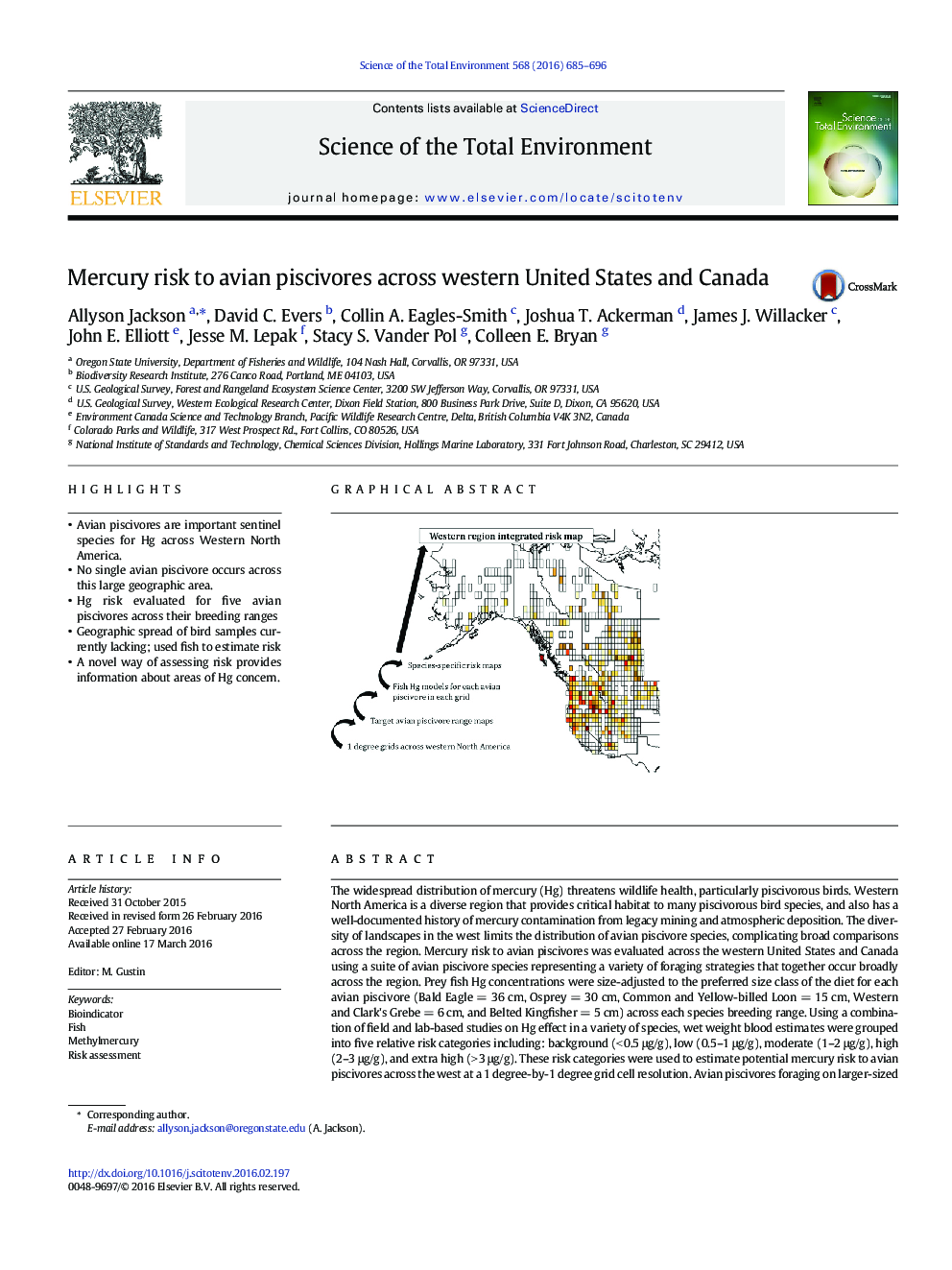| Article ID | Journal | Published Year | Pages | File Type |
|---|---|---|---|---|
| 6321188 | Science of The Total Environment | 2016 | 12 Pages |
â¢Avian piscivores are important sentinel species for Hg across Western North America.â¢No single avian piscivore occurs across this large geographic area.â¢Hg risk evaluated for five avian piscivores across their breeding rangesâ¢Geographic spread of bird samples currently lacking; used fish to estimate riskâ¢A novel way of assessing risk provides information about areas of Hg concern.
The widespread distribution of mercury (Hg) threatens wildlife health, particularly piscivorous birds. Western North America is a diverse region that provides critical habitat to many piscivorous bird species, and also has a well-documented history of mercury contamination from legacy mining and atmospheric deposition. The diversity of landscapes in the west limits the distribution of avian piscivore species, complicating broad comparisons across the region. Mercury risk to avian piscivores was evaluated across the western United States and Canada using a suite of avian piscivore species representing a variety of foraging strategies that together occur broadly across the region. Prey fish Hg concentrations were size-adjusted to the preferred size class of the diet for each avian piscivore (Bald Eagle = 36 cm, Osprey = 30 cm, Common and Yellow-billed Loon = 15 cm, Western and Clark's Grebe = 6 cm, and Belted Kingfisher = 5 cm) across each species breeding range. Using a combination of field and lab-based studies on Hg effect in a variety of species, wet weight blood estimates were grouped into five relative risk categories including: background (< 0.5 μg/g), low (0.5-1 μg/g), moderate (1-2 μg/g), high (2-3 μg/g), and extra high (> 3 μg/g). These risk categories were used to estimate potential mercury risk to avian piscivores across the west at a 1 degree-by-1 degree grid cell resolution. Avian piscivores foraging on larger-sized fish generally were at a higher relative risk to Hg. Habitats with a relatively high risk included wetland complexes (e.g., prairie pothole in Saskatchewan), river deltas (e.g., San Francisco Bay, Puget Sound, Columbia River), and arid lands (Great Basin and central Arizona). These results indicate that more intensive avian piscivore sampling is needed across Western North America to generate a more robust assessment of exposure risk.
Graphical abstractDownload high-res image (207KB)Download full-size image
